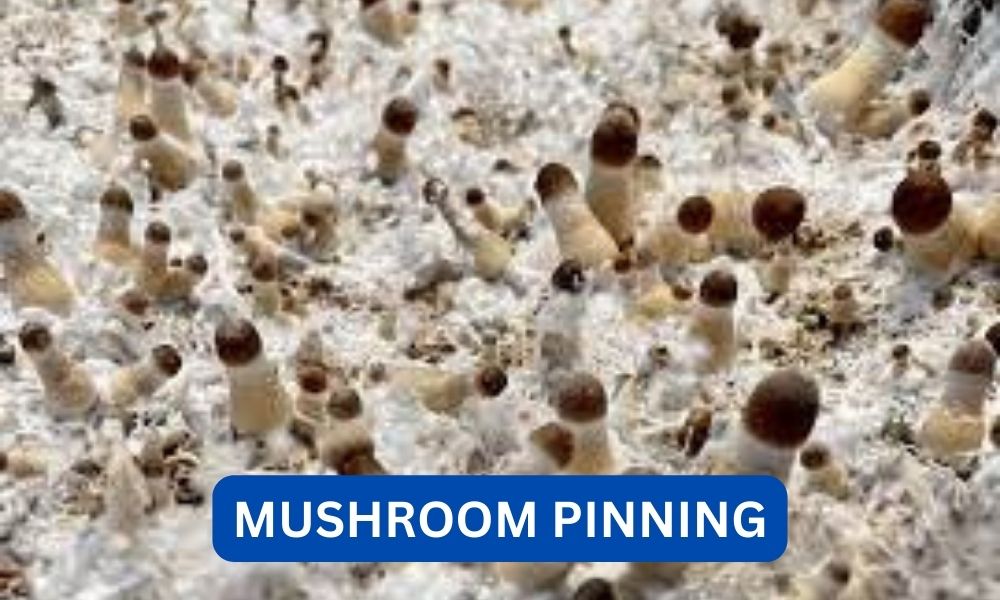Mushroom pinning is a crucial stage in the growth of mushrooms. It is the process where the mushroom fruiting bodies begin to emerge from the substrate. Understanding what mushroom pinning looks like is essential for mushroom cultivators to ensure optimal conditions for successful fruiting. In this article, we will explore the various aspects of mushroom pinning, including its appearance, factors influencing pinning, and tips for promoting healthy pinning.
Contents
1. What is Mushroom Pinning?
Mushroom pinning, also known as primordia formation, is the initial stage of mushroom fruiting. It is the point at which the mycelium, the vegetative part of the fungus, begins to develop reproductive structures called pins. These pins eventually grow into mature mushrooms.
During pinning, small bumps or knots appear on the surface of the substrate, indicating the initiation of fruiting body formation. These bumps are the primordia, which will eventually develop into mushrooms. The appearance of pins is an exciting and promising stage for mushroom cultivators, as it signifies the successful progression of the cultivation process.
2. What Does Mushroom Pinning Look Like?
The appearance of mushroom pinning can vary depending on the mushroom species being cultivated. However, there are some common characteristics that can help identify pinning:
Read:don’t mix it recipes- Small protrusions: Mushroom pins typically appear as small, rounded protrusions on the surface of the substrate. These protrusions can range in size from a few millimeters to a centimeter.
- White or light-colored: The initial pins are often white or light-colored, indicating their immaturity. As they develop further, the color may change depending on the mushroom species.
- Tightly clustered: Pins tend to cluster together in groups. They may appear in tight clusters or spread out across the substrate, depending on the growing conditions and mushroom species.
- Moist and shiny: The surface of the pins is usually moist and shiny, indicating the presence of moisture necessary for their development.
- Visible mycelium: The mycelium, which is the network of fungal threads, may be visible around the pins. It often appears as white, thread-like strands.
It is important to note that the appearance of pins can change rapidly as they develop into mature mushrooms. The initial pins may undergo color changes, elongate, and expand in size, eventually forming the recognizable shape of the mushroom cap and stem.
3. Factors Influencing Mushroom Pinning
Several factors influence the pinning process in mushrooms. Understanding these factors can help cultivators create optimal conditions for successful pinning. Here are some key factors to consider:
Read:Can cooker recipes for camping- Temperature: Different mushroom species have specific temperature requirements for pinning. For example, the common button mushroom (Agaricus bisporus) typically pins at temperatures between 60-70°F (15-21°C), while oyster mushrooms (Pleurotus spp.) prefer slightly higher temperatures around 70-75°F (21-24°C). Maintaining the appropriate temperature range is crucial for promoting pinning.
- Humidity: Adequate humidity levels are essential for pinning. Most mushrooms require high humidity to initiate fruiting. Maintaining humidity levels between 80-90% can help promote pinning. This can be achieved through misting or using a humidifier.
- Light: Light plays a significant role in triggering pinning in some mushroom species. For example, oyster mushrooms are phototropic and require exposure to light to initiate pinning. Other species, such as shiitake mushrooms (Lentinula edodes), are less dependent on light. Understanding the light requirements of the specific mushroom being cultivated is crucial for successful pinning.
- Air exchange: Proper air exchange is important for pinning. It helps remove carbon dioxide and replenish oxygen, creating an optimal environment for mushroom growth. Insufficient air exchange can hinder pinning and lead to poor fruiting.
- Substrate composition: The composition of the substrate used for mushroom cultivation can influence pinning. Different mushrooms have specific substrate requirements. For example, oyster mushrooms thrive on a substrate of straw or sawdust, while shiitake mushrooms prefer hardwood logs. Using the appropriate substrate composition is essential for promoting healthy pinning.
4. Tips for Promoting Healthy Pinning
While the pinning process is influenced by various factors, there are several tips that can help cultivators promote healthy pinning and increase their chances of a successful harvest:
Read:can mackerel recipe- Optimize temperature and humidity: Maintaining the ideal temperature and humidity range for the specific mushroom species being cultivated is crucial. Regular monitoring and adjustments may be necessary to ensure optimal conditions.
- Provide proper lighting: Understanding the light requirements of the mushroom species is important. If the species requires light for pinning, ensure they receive adequate exposure to light. This can be achieved through natural light or artificial lighting sources such as fluorescent or LED lights.
- Ensure proper air exchange: Good air circulation is essential for healthy pinning. Use fans or ventilation systems to ensure proper air exchange and prevent the buildup of carbon dioxide.
- Use high-quality substrate: The substrate used for cultivation should be of high quality and suitable for the specific mushroom species. Follow recommended substrate preparation techniques to ensure optimal conditions for pinning.
- Monitor and adjust: Regularly monitor the pinning process and make necessary adjustments to the growing conditions. This may include misting to maintain humidity, adjusting temperature, or providing additional light if required.
5. Summary
Mushroom pinning is an exciting stage in the cultivation process, indicating the successful initiation of fruiting body formation. Understanding what mushroom pinning looks like and the factors influencing it is crucial for mushroom cultivators. By optimizing temperature, humidity, light, air exchange, and substrate composition, cultivators can promote healthy pinning and increase their chances of a successful harvest. Remember to monitor the pinning process closely and make necessary adjustments to ensure optimal conditions for mushroom growth. With proper care and attention, you can enjoy a bountiful harvest of delicious mushrooms.









